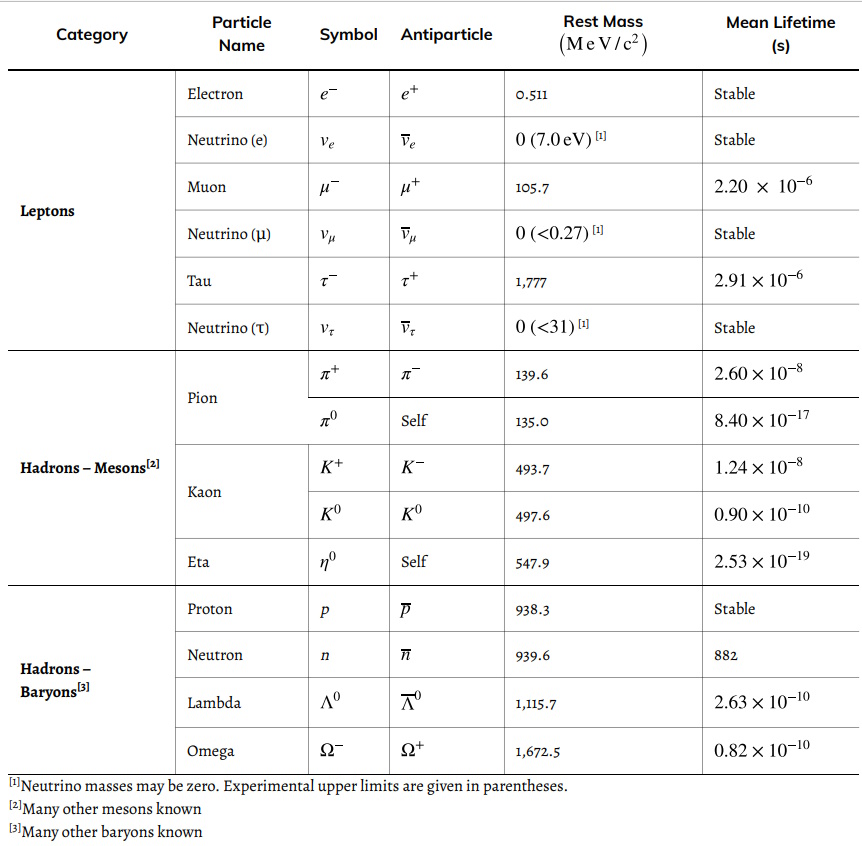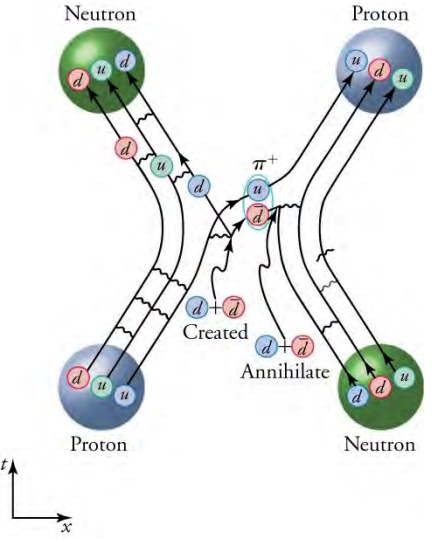Despite the apparent complexity within the universe, there are just four basic forces. These forces are responsible for all interactions known to science: from the very small to the very large to those that we experience in our day-to-day lives. These forces describe the movement of galaxies, the chemical reactions in our laboratories, the structure within atomic nuclei, and the cause of radioactive decay. They describe the true cause behind familiar terms like friction and the normal force. These four basic forces are known as fundamental because they alone are responsible for all observations of forces in nature. The four fundamental forces are gravity, electromagnetism, weak nuclear force, and strong nuclear force.
Particles can be grouped according to what forces they feel between them. All particles are affected by gravity since gravity affects the space and time in which particles exist. All charged particles are affected by the electromagnetic force, as are neutral particles that have an internal distribution of charge.
Hadrons are particles that feel the strong nuclear force, whereas leptons are particles that do not. All particles feel the weak nuclear force. This means that hadrons are distinguished by being able to feel both the strong and weak nuclear forces. Leptons and hadrons are distinguished in other ways as well. Leptons are fundamental particles that have no measurable size, while hadrons are composed of quarks and have a diameter on the order of 10 to 15 m. Six particles, including the electron and neutrino, make up the list of known leptons. There are hundreds of complex particles in the hadron class, a few of which (including the proton and neutron) are listed below.

List of Leptons and Hadrons
There are many more leptons, mesons, and baryons yet to be discovered and measured. The purpose of trying to uncover the smallest indivisible things in existence is to explain the world around us through forces and the interactions between particles, galaxies and objects. This is why a handful of scientists devote their life's work to smashing together small particles.
What internal structure makes a proton so different from an electron? The proton, like all hadrons, is made up of quarks. A few examples of hadron quark composition can be seen in Figure 23.14. As shown, each hadron is constructed of multiple quarks. As mentioned previously, the fractional quark charge in all four hadrons sums to the particle's integral value. Also, notice that the color composition for each of the four particles adds to white. Each of the particles shown is constructed of up, down, and their antiquarks. This is not surprising, as the quarks strange, charmed, top, and bottom are found in only our most exotic particles.

All baryons, such as the proton and neutron shown here, are composed of three quarks. All mesons, such as the pions shown
here, are composed of a quark-antiquark pair. Arrows represent the spins of the quarks. The colors are such that they need to add to white
for any possible combination of quarks.
You may have noticed that while the proton and neutron are composed of three quarks, both pions are comprised of only two quarks. This refers to a final delineation in particle structure. Particles with three quarks are called baryons. These are heavy particles that can decay into another baryon. Particles with only two quarks-a-quark-anti-quark pair-are called mesons. These are particles of moderate mass that cannot decay into the more massive baryons.

Before continuing, take a moment to view the figure above. In this figure, you can see the strong force reimagined as a color force. The particles interacting in this figure are the proton and neutron. This reenvisioning of the strong force as an interaction between colored quarks is the critical concept behind quantum chromodynamics.
Article source: OpenStax is a nonprofit educational technology initiative based at Rice University. OpenStax's mission is to improve educational access and learning for everyone. Textbooks on OpenStax's site are licensed under a Creative Commons Attribution 4.0 International License
.
